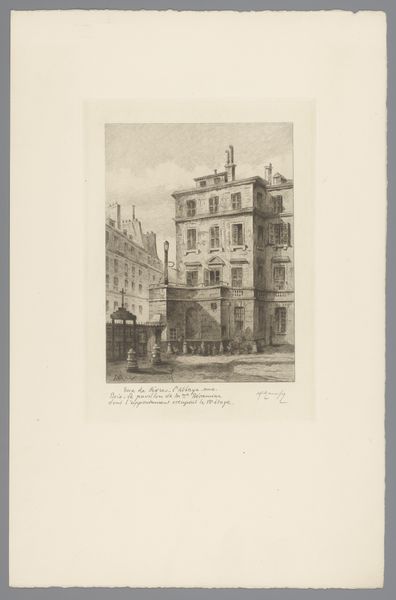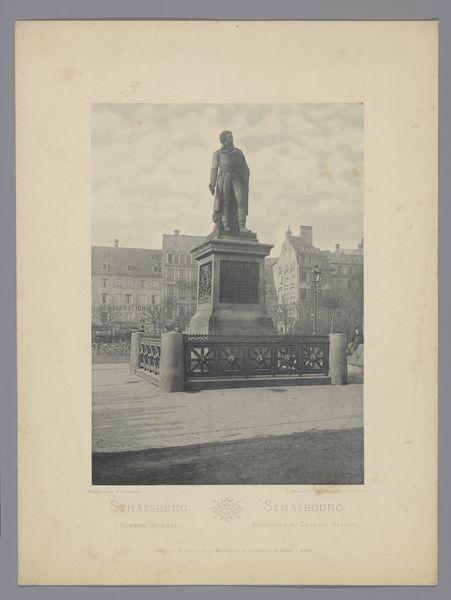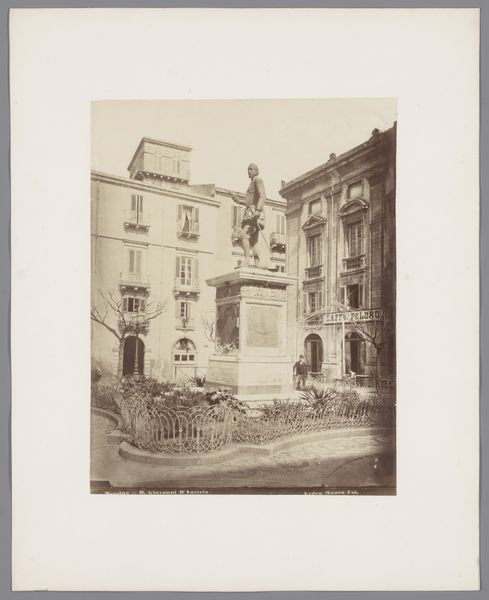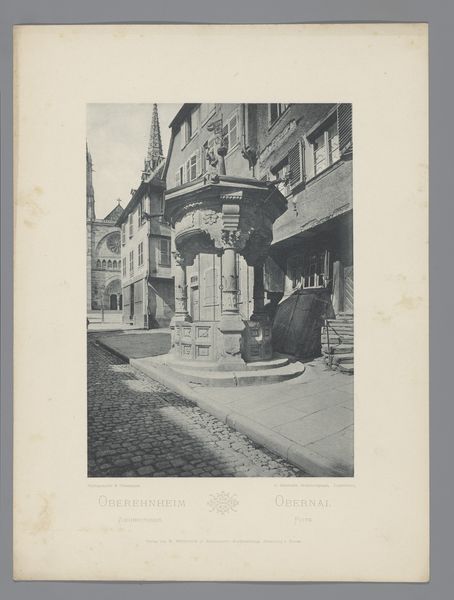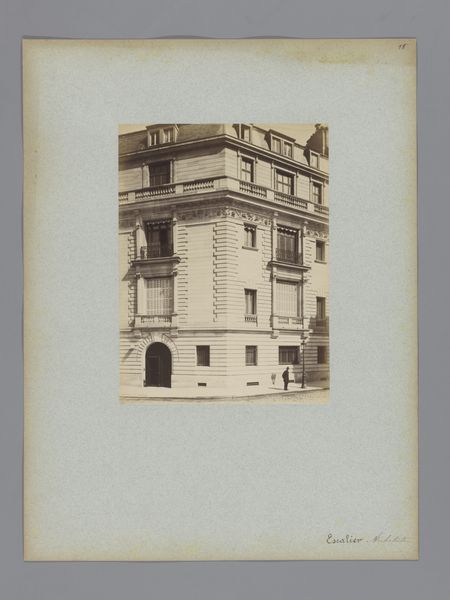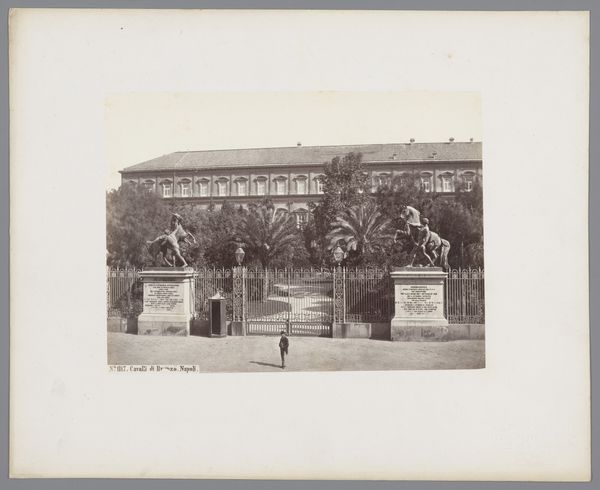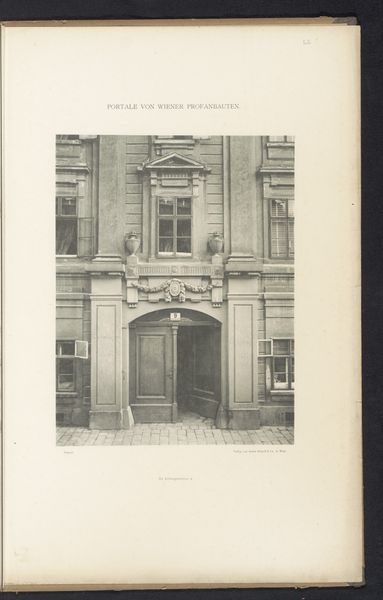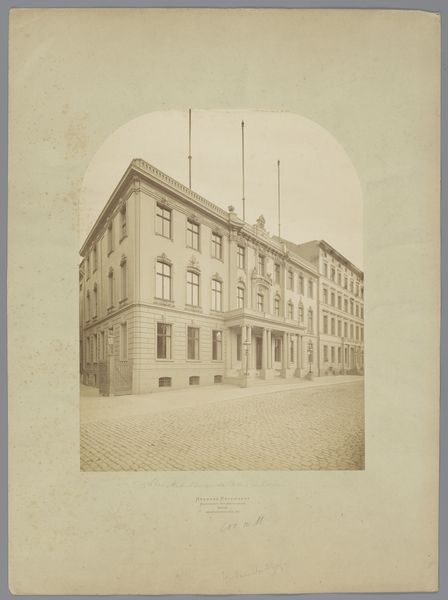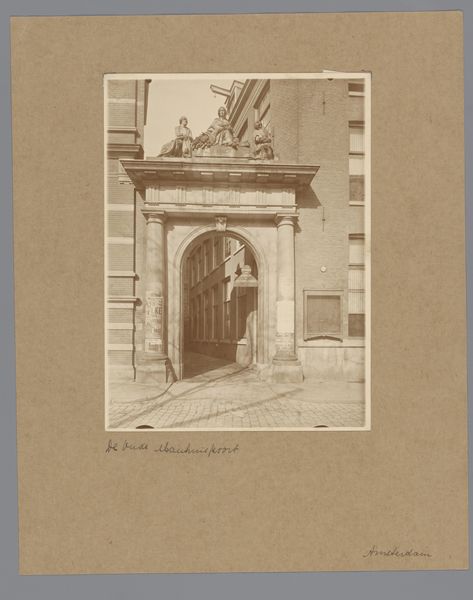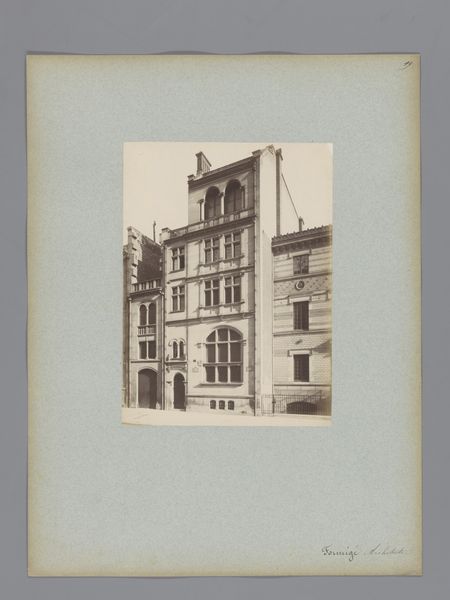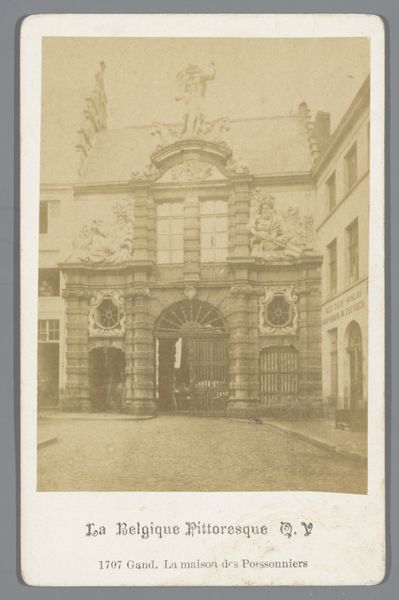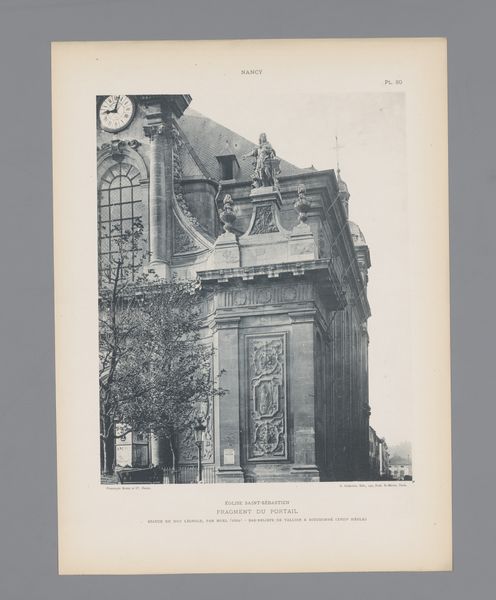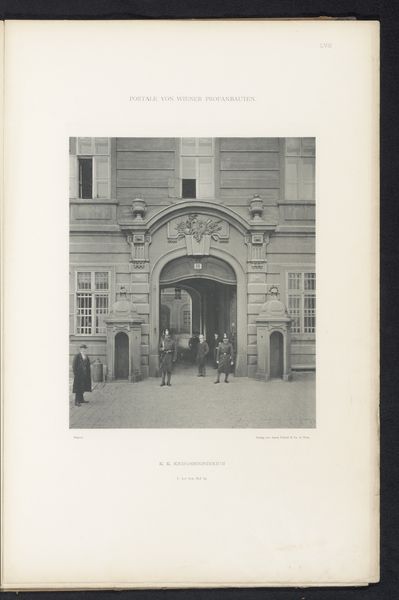
print, photography
#
portrait
# print
#
photography
#
cityscape
#
realism
Dimensions: height 217 mm, width 153 mm
Copyright: Rijks Museum: Open Domain
Curator: This photogravure, credited to Charles Bernhoeft, showcases the "Herdenkingsmonument van Johannes Gutenberg te Straatsburg," captured before 1894. A monument of Gutenberg in Strasbourg. Editor: The image has a certain quiet dignity. The greyscale tones emphasize the monument's presence in the cityscape. It feels… grounded, substantial. Curator: Bernhoeft's technical precision allows for a striking examination of textures. Notice how the light catches the stone. This reflects a burgeoning sense of civic pride in technological advancement at this time, using photography as a promotional tool. Editor: The positioning is very deliberate, isn't it? The buildings create a solid background for the sculpture. Do you think it aimed to communicate an understanding of social order? Curator: Undoubtedly. The deliberate arrangement highlights a vision of progress. Editor: How do you interpret the statue’s gaze? Is it directed outwards, towards the future? Curator: Precisely! In monuments, we often find those semiotic markers— the gaze representing future progress or acknowledging societal dependence. These choices are loaded! The photographer is making subtle indications about technological promise to his late-nineteenth-century audience. Editor: Bernhoeft captures not just a monument but also a moment. Curator: Indeed. Considering its status as a print, and knowing the location was a significant printing hub, what are the broader social forces do you feel might be in motion here? Editor: Well, Strasbourg and its place in the development of printing… It all seems part of that complex interplay of local and national identity as printing accelerates social changes at this point in history. The photograph participates in that process, right? Curator: Absolutely, our experience with these images has changed. A key feature is how images like this create a direct access to cultural symbols which serve social goals. Editor: It has certainly offered a new perspective on public sculpture in our own present. Curator: Agreed; thinking about the photograph as part of public space encourages a deeper sense of the statue and our relation to civic ideals.
Comments
No comments
Be the first to comment and join the conversation on the ultimate creative platform.
